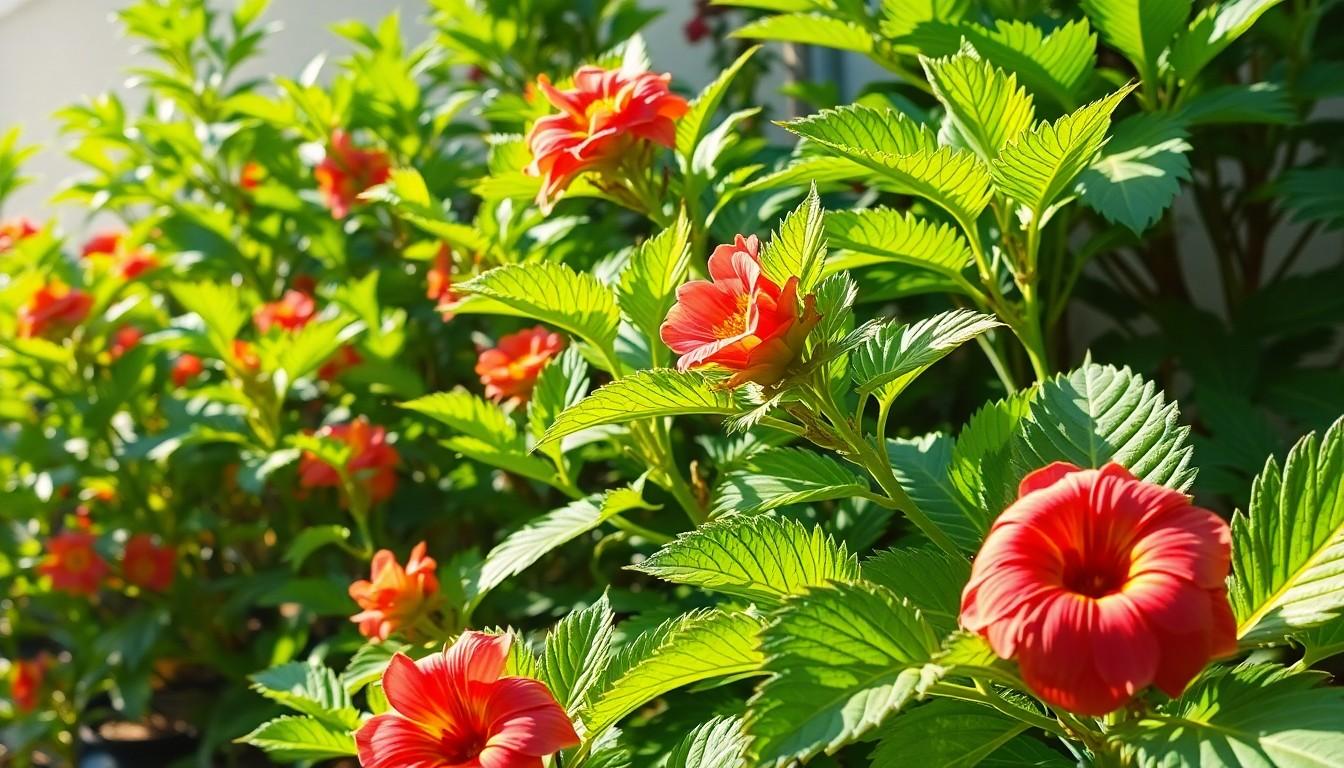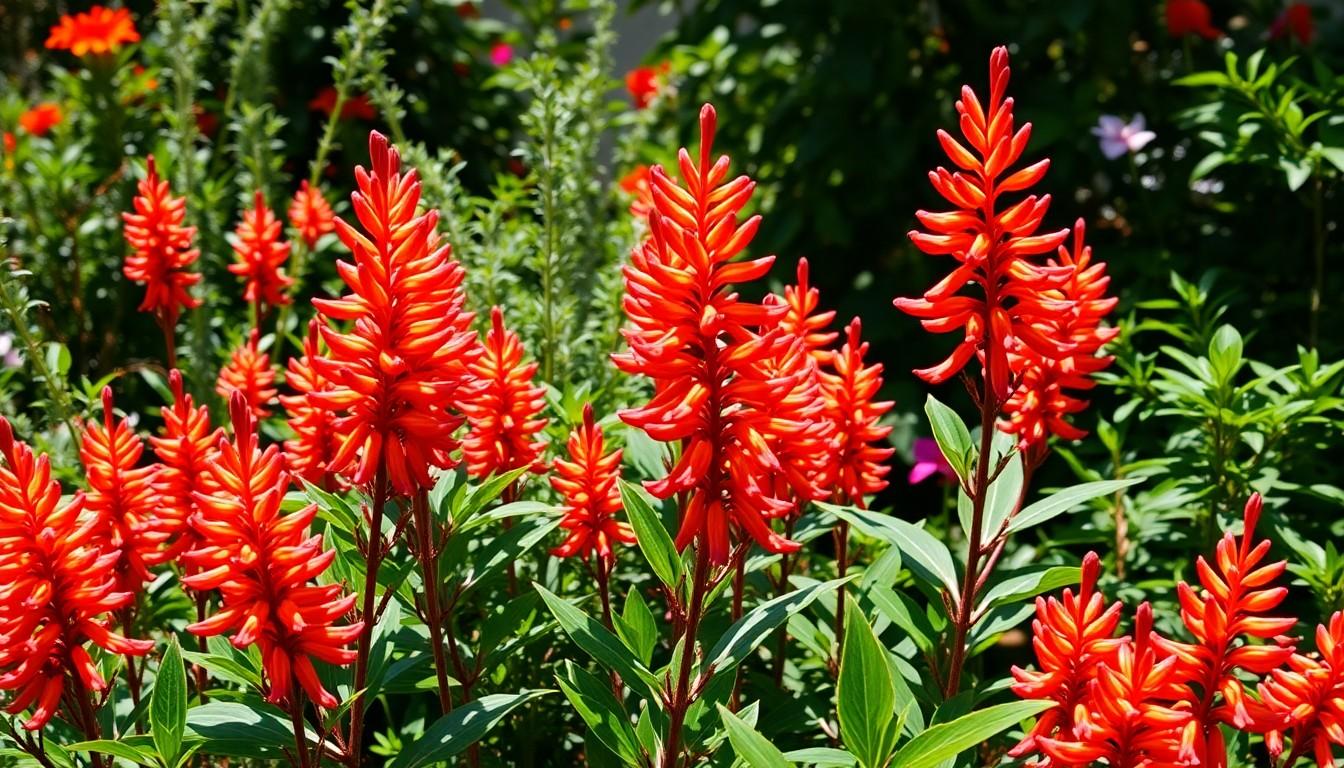Cigar plants, or Cuphea ignea, are the life of the garden party, attracting hummingbirds and adding a splash of color that even Picasso would envy. With their vibrant blooms and low maintenance needs, these beauties are perfect for both seasoned gardeners and those still trying to figure out which end of the trowel to use.
Understanding Cigar Plants
Cigar plants, or Cuphea ignea, thrive in gardens thanks to their striking colors and ability to attract hummingbirds. They stand out for their low maintenance needs, appealing to both seasoned gardeners and newcomers alike.
Botanical Characteristics
Cigar plants grow to a height of 1 to 3 feet and spread approximately 1 to 2 feet. Foliage consists of narrow, dark green leaves that measure about 2 to 4 inches long. Bright tubular flowers bloom in colors ranging from red to orange, creating a vibrant display from summer into fall. They function well in full sun or partial shade, which contributes to their versatility in landscape design. Soil that drains well enhances their growth, while regular watering promotes healthy blooms.
Common Varieties
Several popular varieties of cigar plants exist, each offering unique attributes. Cuphea ignea ‘Firecracker’ showcases vivid red flowers, drawing attention in any garden setting. Cuphea ignea ‘Miniature’ has a compact size, making it ideal for container gardening. Cuphea ignea ‘Purple Wave’ introduces purple-hued flowers, adding diversity to garden color schemes. These varieties flourish in similar growing conditions, making them easy to incorporate into various gardening designs. Their ability to attract pollinators enhances the overall appeal of any garden space.
Essential Cigar Plant Care Guidelines

Cigar plants require specific care to thrive in gardens. Proper attention to light, watering, and soil ensures vibrant blooms and healthy growth.
Light Requirements
Cigar plants thrive in full sun, requiring at least six hours of direct sunlight daily. Partial shade can work, but too much shade may reduce flower production. Bright light fosters robust foliage and encourages the production of attractive blooms. Positioning plants near south-facing walls can maximize sunlight exposure. Ensuring adequate light leads to healthier plants, which better attract hummingbirds.
Watering Practices
Regular watering plays a crucial role in maintaining healthy cigar plants. Soil should remain consistently moist, especially during dry spells. Overwatering can lead to root rot, while underwatering can cause stress and wilting. Deep, infrequent watering promotes strong root systems. Monitoring soil moisture levels helps maintain optimal hydration.
Soil Composition
Cigar plants prefer well-draining soil rich in organic matter. A mixture of loamy soil with compost enhances nutrition and drainage. Soil pH should ideally range from 6.0 to 7.0 for optimal growth. Improving drainage with sand or perlite can prevent waterlogging. Regularly amending soil with organic matter supports overall plant health and vitality.
Fertilization Techniques
Cigar plants benefit from regular fertilization to maintain vibrant growth and floral display. Using the right fertilizer type ensures plants receive essential nutrients.
Types of Fertilizers
Organic fertilizers such as compost or well-rotted manure enrich soil health. They promote beneficial microbial activity and enhance nutrient availability. Slow-release granules offer a convenient option, providing nourishment over time while minimizing nutrient leaching. Synthetic fertilizers also work effectively, focusing on balanced N-P-K ratios. Choosing a formulation with a higher middle number supports blooming. Consider liquid fertilizers for quick nutrient absorption, especially during the growing season.
Application Frequency
Fertilization frequency relies on plant growth stages. Applying fertilizer every four to six weeks during the active growing season encourages optimal development. Early spring marks a crucial time for the first application, as plants emerge from dormancy. Mid-summer applications support continuous blooming and robust foliage. In late summer, it’s advisable to reduce or stop fertilization to prepare plants for dormancy. Regular monitoring of plant health informs adjustments to the fertilization schedule, ensuring they thrive throughout the year.
Managing Pests and Diseases
Cigar plants can face challenges from various pests and diseases. Addressing these issues proactively ensures healthy growth and vibrant blooms.
Common Pests
Aphids often target Cigar plants, draining sap and weakening the foliage. Spider mites may also attack, causing leaf discoloration and webbing. Whiteflies can infest the undersides of leaves, leading to yellowing. Neem oil effectively controls these pests, providing a natural solution. Regular inspection of leaves and stems helps catch infestations early. Introduced beneficial insects, like ladybugs, assist in controlling aphid populations. Maintaining plant vigor through proper watering and fertilization also reduces susceptibility to pests.
Disease Prevention Strategies
Fungal infections, such as powdery mildew, threaten Cigar plants, particularly in humid conditions. Ensuring adequate airflow around plants contributes to disease prevention. Applying mulch helps maintain soil moisture while preventing splashing during rain. Regular removal of dead leaves and debris keeps the garden clean and reduces disease risk. Utilizing disease-resistant varieties supports overall plant health. Monitoring for early symptoms allows for swift intervention, such as applying fungicides when necessary. Maintaining proper watering habits, such as avoiding overhead irrigation, lessens the likelihood of fungal issues.
Conclusion
Cigar plants are a fantastic choice for any garden. Their vibrant blooms not only enhance the landscape but also attract beneficial pollinators. With minimal care requirements and adaptability to various conditions, they’re perfect for gardeners of all skill levels.
By ensuring they receive adequate sunlight and proper watering, along with regular fertilization and pest management, these plants can thrive. Maintaining a healthy environment will lead to stunning displays that bring joy and beauty to outdoor spaces. Embracing the care tips shared will help anyone enjoy the full potential of their Cigar plants.

